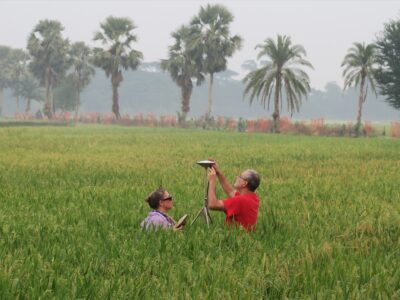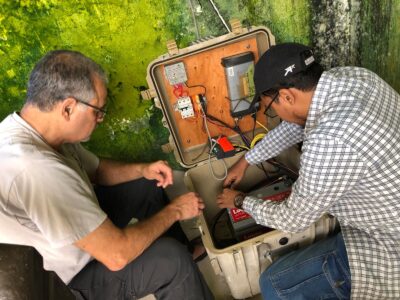
We have been sailing along collecting data, but so far the data quality is poor due to shallow gas in the sediments. We thought we might have some problems with gas, but the problem is more widespread than we expected. We are now out of the inland summer lake where we met the boat and will soon try profiles up the Indian border where we expect a buried fault. We may pick up a local pilot that knows which ones are navigable. We hope the environment is different enough that we can get good data. A Meanwhile we have been changing the sound source to try to get better data. Depending how it goes, we will continue around here or head to a different part of the country. In contrast, the ship and company is great. Working primarily daylight hours with systems are running flawlessly, we do not have formal watches. It is only for deploying the seismic data and retrieving it that all hands are needed. A small group takes care of maintaining the running equipment. Voldhard Spiess keeps trying different processing to improve the data. We start up at 6:00 AM and continue until around sunset or reaching our target stopping town. During the day, we are continuously having discussions on the science, with each of us bringing different expertise. The data, methods to improve it and where to go are ongoing subjects of discussions. With Steve and Humayun here, we can also plan for future parts of the project.

Last night, we stopped in Jamalganj, where I helped install one of our compaction meters in February. Back then, the river was probably 15 feet lower. A large group came ashore with Humayun and myself to see the site. It is my third time in this now familiar town. Waiting for Aziz, the caretaker, we attracted a large crowd. Walking to the site as darkness fell (and pretty quickly in the tropics), we discovered Aziz had brought a crescent wrench rather than a pipe wrench. With typical Bangladeshi ingenuity, glancing blows with a hammer loosened the cap on the pipe and we were able to retrieve the piezometers and their water level data. We then visited the former jail cell with its massive iron bars where the GPS receiver is and Humayun downloaded that data. Shaheen, Aziz’s son was away in Dhaka, but we retrieved the laptop with the compaction data and copied it, too. The biggest change in the site is that instead of mud everywhere, the site was now covered in green. A small bright spot of success in the trip.




